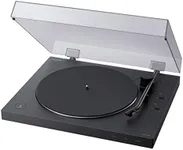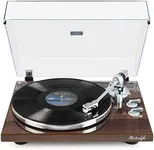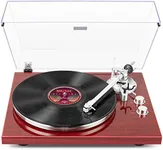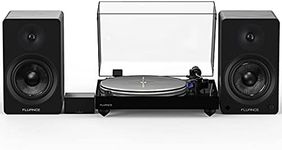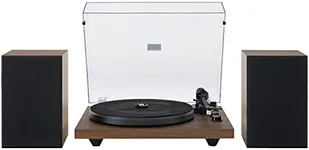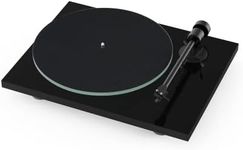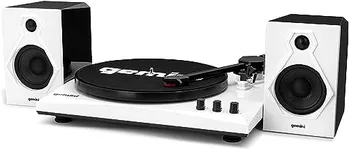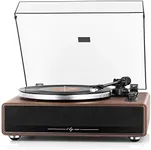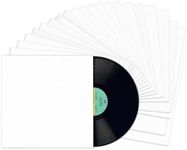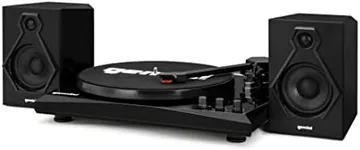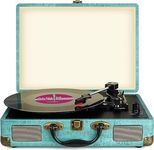Buying Guide for the Best Turntable With Bluetooth Connections
Choosing the right turntable with Bluetooth connections can be a rewarding experience, especially if you love the warm sound of vinyl records but also want the convenience of modern technology. When selecting a turntable, it's important to consider several key specifications to ensure you get the best fit for your needs. Understanding these specs will help you make an informed decision and enjoy your music collection to the fullest.Bluetooth ConnectivityBluetooth connectivity allows you to wirelessly stream music from your turntable to Bluetooth-enabled speakers or headphones. This is important for those who want the flexibility to place their turntable anywhere in the room without worrying about cables. When evaluating Bluetooth connectivity, consider the range and stability of the connection. A good Bluetooth range is typically around 30 feet, but this can vary. If you plan to move around a lot or have a large room, look for a turntable with a strong and stable Bluetooth connection.
Cartridge TypeThe cartridge is the component that holds the needle (stylus) and is responsible for reading the grooves on your records. This is crucial for sound quality. There are two main types: moving magnet (MM) and moving coil (MC). MM cartridges are more common and generally more affordable, making them a good choice for beginners. MC cartridges can offer superior sound quality but are typically more expensive and may require a special preamp. If you're new to vinyl, an MM cartridge is a great starting point. If you're an audiophile looking for the best sound, consider an MC cartridge.
Drive TypeTurntables come with either belt-drive or direct-drive systems. Belt-drive turntables use an elastic belt to spin the platter, which can help reduce motor noise and vibration, leading to better sound quality. Direct-drive turntables have the motor directly connected to the platter, offering more consistent speed and better torque, which is ideal for DJing. If you prioritize sound quality for home listening, a belt-drive turntable is a good choice. If you plan to use your turntable for DJing or need quick start-up times, a direct-drive turntable might be better.
Built-in PreampA preamp boosts the signal from the turntable to a level that can be played through speakers. Some turntables come with a built-in preamp, which simplifies setup and allows you to connect directly to powered speakers or a stereo system. If your audio setup doesn't include a preamp, a turntable with a built-in preamp can be very convenient. However, if you already have a high-quality external preamp, you might prefer a turntable without a built-in preamp to avoid redundancy and potentially better sound quality.
Speed SettingsTurntables typically support different speed settings to play various types of records. The most common speeds are 33 1/3 RPM for LPs and 45 RPM for singles. Some turntables also support 78 RPM for older records. It's important to choose a turntable that supports the speeds of the records you own. If you have a diverse collection, look for a turntable that can easily switch between these speeds. If you primarily listen to modern LPs, a turntable with just 33 1/3 and 45 RPM settings will suffice.
Build QualityThe build quality of a turntable affects its durability and sound performance. A well-built turntable will have a sturdy base (plinth) to minimize vibrations and a high-quality tonearm for accurate tracking. Materials like metal and dense wood are preferable over plastic. When assessing build quality, consider the weight and feel of the turntable. Heavier turntables tend to be more stable and produce better sound. If you plan to use your turntable frequently, investing in one with good build quality will ensure it lasts longer and provides a better listening experience.
